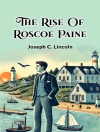In ‘A Red Wallflower, ‘ Susan Warner crafts a poignant narrative steeped in the social dynamics of 19th-century America. Through her vivid prose and intricate characterizations, Warner explores themes of identity, belonging, and moral complexity, set against the backdrop of a rigidly stratified society. The novel’s literary style melds rich descriptiveness with sharp dialogue, illuminating the internal and external conflicts faced by its protagonists. The story intricately examines the struggles of women for agency and recognition, beautifully reflecting the cultural milieu of the time and addressing crucial issues of class, gender, and personal ambition. Susan Warner, an esteemed figure in American literature, was known for her deep engagement with the moral and social issues of her era. Influenced by her own experiences as a woman writer in a predominantly male-dominated literary sphere, Warner imbued her works with a sense of social responsibility and empathy. Her personal journey, marked by a commitment to addressing societal concerns, heavily informs the themes of ‘A Red Wallflower, ‘ rendering it not just a work of fiction but also a lens through which to view the evolving role of women in the 19th century. For readers seeking a richly evocative exploration of societal norms and individual aspirations, ‘A Red Wallflower’ is a must-read. Warner’s nuanced storytelling invites reflection on the enduring struggles for autonomy and acceptance, making this novel a timeless addition to the canon of American literature.
Об авторе
Susan Warner, born Elizabeth Wetherell, is distinguished as a 19th-century American author renowned for her didactic and sentimental novels. Born on July 11, 1819, in New York, Warner also penned works under the pseudonym ‘Elizabeth Wetherell.’ Her literary career was marked by her debut novel, ‘The Wide, Wide World’ (1850), which gained immense popularity and is considered one of the first domestic novels in America. Warner’s novels often explored religious themes and were characterized by their illustrations of Christian piety and morality. In ‘A Red Wallflower’ (1884), Warner delicately weaves a tale that embodies the moral and religious convictions prevalent in her work. This novel, like many of her others, was well-received, cementing Warner’s reputation as a significant figure in 19th-century American literature. Her contribution to the genre, through a catalog that includes over thirty novels, remains an essential part of the literary tapestry of her time, reflecting the socio-religious values of the period. Warner’s narrative style is embedded in the tradition of the sentimental novel, where she often employed domestic settings to portray her characters’ development and moral dilemmas. She passed away on March 17, 1885, but left behind a legacy that is distinguished not only by its literary merit but also by its depth of character and the insight it offers into American domestic and religious life during the mid-1800s.












